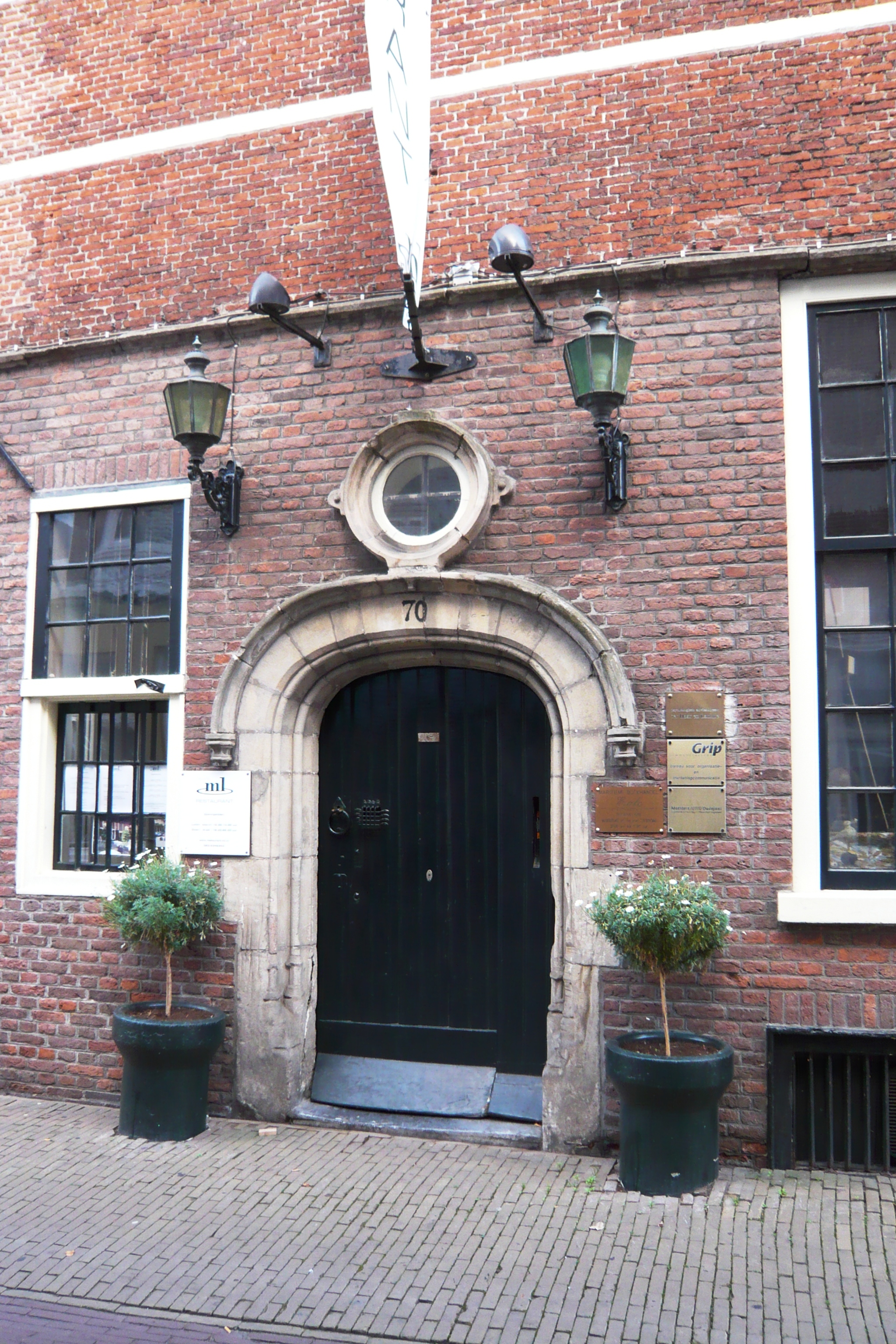|
Bank Van Lening
{{unreferenced, date=June 2021 A Bank van Lening is a Dutch term for an early type of bank that functioned similarly to a Mount of Piety (Dutch: Berg van Barmhartigheid). It was usually called the " lommerd". Examples were: *Stadsbank van Lening, Amsterdam The Stadsbank van Lening () is a not-for-profit city Bank van Lening dating from 1614 on the Oudezijds Voorburgwal in Amsterdam, Netherlands. It is the oldest credit distributor in Amsterdam and today has about 85 employees working here and in of ... * Bank van Lening, Haarlem * Stadsleenbank Delft Banking in the Netherlands History of banking Medieval banking Pawn shops ... [...More Info...] [...Related Items...] OR: [Wikipedia] [Google] [Baidu] |
Bank
A bank is a financial institution that accepts deposits from the public and creates a demand deposit while simultaneously making loans. Lending activities can be directly performed by the bank or indirectly through capital markets. Because banks play an important role in financial stability and the economy of a country, most jurisdictions exercise a high degree of regulation over banks. Most countries have institutionalized a system known as fractional reserve banking, under which banks hold liquid assets equal to only a portion of their current liabilities. In addition to other regulations intended to ensure liquidity, banks are generally subject to minimum capital requirements based on an international set of capital standards, the Basel Accords. Banking in its modern sense evolved in the fourteenth century in the prosperous cities of Renaissance Italy but in many ways functioned as a continuation of ideas and concepts of credit and lending that had their roots in the a ... [...More Info...] [...Related Items...] OR: [Wikipedia] [Google] [Baidu] |
Mount Of Piety
A mount of piety is an institutional pawnbroker run as a charitable organization, charity in Europe from Renaissance times until today. Similar institutions were established in the colonies of Catholic countries; the Mexican Nacional Monte de Piedad is still in operation. The institutions called ''Monte di Pietà'' originated in 15th-century Italy, where these instutions gave poor people access to loans with reasonable interest rates. It used funds from charitable donors as capital, and made loans to the poor so they could avoid going to exploitative lenders. Borrowers offered valuables as collateral, making the mount of piety more like a pawn shop than a bank. History This fifteenth-century institution originated in Italy; Barnabas of Terni is credited as the originator of the concept. It was developed in cities as an early form of organized Charity (practice), charity, and was intended as a reform against money lending. The public office was organized and operated by the Cath ... [...More Info...] [...Related Items...] OR: [Wikipedia] [Google] [Baidu] |
Lombard Banking
Lombard banking was a mount of piety style of pawn shop in the Middle Ages, a type of banking that originated in prosperous Northern Italy, in a region called Lombardy during the Middle Ages. The term was sometimes used in a derogatory sense, and some Lombardy bankers were accused of usury. History A Catholic prohibition on profit from money without working made banking sinful. Though Pope Leo the Great forbade charging interest on loans by canon law, it was not forbidden to take collateral on loans. Pawn shops thus operate on the basis of a contract that fixes in advance the "fine" for not respecting the nominal term of the "interest free" loan, or alternatively, may structure a sale-repurchase by the "borrower", where the interest is implicit in the repurchase price. Similar conventions exist in modern Islamic banking. Various ways around the prohibition were devised, so that the lowly pawnshop contractors could bundle their risk and investment for larger undertakings. Christ ... [...More Info...] [...Related Items...] OR: [Wikipedia] [Google] [Baidu] |
Stadsbank Van Lening, Amsterdam
The Stadsbank van Lening () is a not-for-profit city Bank van Lening dating from 1614 on the Oudezijds Voorburgwal in Amsterdam, Netherlands. It is the oldest credit distributor in Amsterdam and today has about 85 employees working here and in offices on the Albert Cuypstraat, Bijlmerplein and Osdorpplein. History The bank was built in 1614 as a conversion of an old warehouse used by the poorhouse O.Z. Huiszittenhuis that had been used to store peat for the inhabitants.Monumentnummer: 6159 Oudezijds Voorburgwal 300 1012 GL te Amsterdam (in Dutch), Rijksdienst voor het Cultureel Erfgoed. Retrieved 1 April 2019. In 1658 the poet Joost van den Vondel became a clerk there. He worked a total of 10 years for the bank and his "bank chair" has been kept. Text above ...
|
Bank Van Lening, Haarlem
The Haarlem Bank van Lening is a former city Bank van Lening that has been converted to a restaurant in Haarlem, the Netherlands. History of the bank Though Haarlem probably had a "Tafel van Leening" in the 13th century, the first mention of it in the Haarlem archives is in 1367 when Count Albrecht gave Hugen Aesuir permission to hold a lombard-tafel for four years in Haarlem. De Bank van Lening te Haarlem, "een instelling van weldadigheid", by Dr. J.Th.R. van Greevenbroek, Fibula-Van Dishoeck, Haarlem, 1981 Two years later a 15-year grant was given to the Lombards in Haarlem ''with the same rules as Delft''. In 1473 Jacques Fossuetz received permission to hold a Tafel van Leening for 10 years from Karel de Stoute. In 1543 Cesar Bouvet (Bovetus), ''marchant piémontais'', received permission to hold a Tafel van Leening for 12 years from Karel V. The earliest location of the Bank van Lening is not precisely known, but was probably in or near the Lombard steeg, near the Janskerk ... [...More Info...] [...Related Items...] OR: [Wikipedia] [Google] [Baidu] |
Stadsleenbank Delft
The Stadsleenbank Delft is a former Bank van Lening on the Burgwal 45 in Delft, and serves today as a pop music podium for concerts. The gable stone is inscribed '1769 Den Ingangh van de Stadsleenbanck', whereby "Den Ingangh" means entrance. Delft first received rights for a city lombard or "lommerd" bank in 1287 from Floris V.De Bank van Lening te Haarlem, "een instelling van weldadigheid", by Dr. J.Th.R. van Greevenbroek, Fibula-Van Dishoeck, Haarlem, 1981 In 1367 similar rights "as in Delft" were granted to Haarlem by Albert I, Duke of Bavaria. The Lombard bankers sold out to the city council in 1676, and the bank functioned until 1923 when it was dissolved. The archives 1676–1923 were only partially retained and were inventoried in 1970 and are today in the collection of the city of Delft. [...More Info...] [...Related Items...] OR: [Wikipedia] [Google] [Baidu] |
Banking In The Netherlands
This is a list of banks in the Netherlands. Central bank *De Nederlandsche Bank Development Bank *FMO (Netherlands) Major banks *ABN Amro *ING Group *Rabobank *De Volksbank Smaller banks * Amanah Group Holdings * Anadolubank Nederland N.V. *Bank Mendes Gans (cash management) *Bank Nederlandse Gemeenten (financing for (semi-)publicly owned organisations) *BinckBank (electronic trading platform) *Bunq *Credit Europe Bank * Demir Halk Bank (commercial bank) *Friesland Bank (retail bank) * GarantiBank International NV *GE Artesia Bank *Kempen & Co (merchant bank) *Knab *Nederlandse Waterschapsbank (financing for (semi-)publicly owned organisations) *Netherlands Development Finance Company (development bank) *NIBC Bank (commercial bank) * Regiobank *Triodos Bank *Van Lanschot Kempen (private bank) *Yapi Kredi Bank Nederland N.V. Foreign banks *Amsterdam Trade Bank *Argenta *Commerzbank AG *Deutsche Bank *N26 *Revolut *Royal Bank of Scotland *TransferWise Defunct banks Ams ... [...More Info...] [...Related Items...] OR: [Wikipedia] [Google] [Baidu] |
History Of Banking
The history of banking began with the first prototype banks, that is, the merchants of the world, who gave grain loans to farmers and traders who carried goods between cities. This was around 2000 BCE in Assyria, India and Sumeria. Later, in ancient Greece and during the Roman Empire, lenders based in temples gave loans, while accepting deposits and performing the change of money. Archaeology from this period in ancient China and India also shows evidence of money lending. Many scholars trace the historical roots of the modern banking system to medieval and Renaissance Italy, particularly the affluent cities of Florence, Venice and Genoa. The Bardi and Peruzzi Families dominated banking in 14th century Florence, establishing branches in many other parts of Europe. Hoggson, N. F. (1926) ''Banking Through the Ages'', New York, Dodd, Mead & Company. The most famous Italian bank was the Medici Bank, established by Giovanni Medici in 1397.Goldthwaite, R. A. ''Banks, Places and Entr ... [...More Info...] [...Related Items...] OR: [Wikipedia] [Google] [Baidu] |
Medieval Banking
The history of banking began with the first prototype banks, that is, the merchants of the world, who gave grain loans to farmers and traders who carried goods between cities. This was around 2000 Common Era, BCE in Assyria, India and Sumeria. Later, in ancient Greece and during the Roman Empire, lenders based in temples gave loans, while accepting Deposit account, deposits and performing the Bureau de change, change of money. Archaeology from this period in History of China#Ancient China, ancient China and history of India, India also shows evidence of Loan, money lending. Many scholars trace the historical roots of the modern banking system to medieval and Renaissance Italy#Early Modern, Italy, particularly the affluent cities of Florence, Venice and Genoa. The Bardi family, Bardi and Peruzzi Families dominated banking in 14th century Florence, establishing branches in many other parts of Europe.Noble Foster Hoggson, Hoggson, N. F. (1926) ''Banking Through the Ages'', New York, ... [...More Info...] [...Related Items...] OR: [Wikipedia] [Google] [Baidu] |







